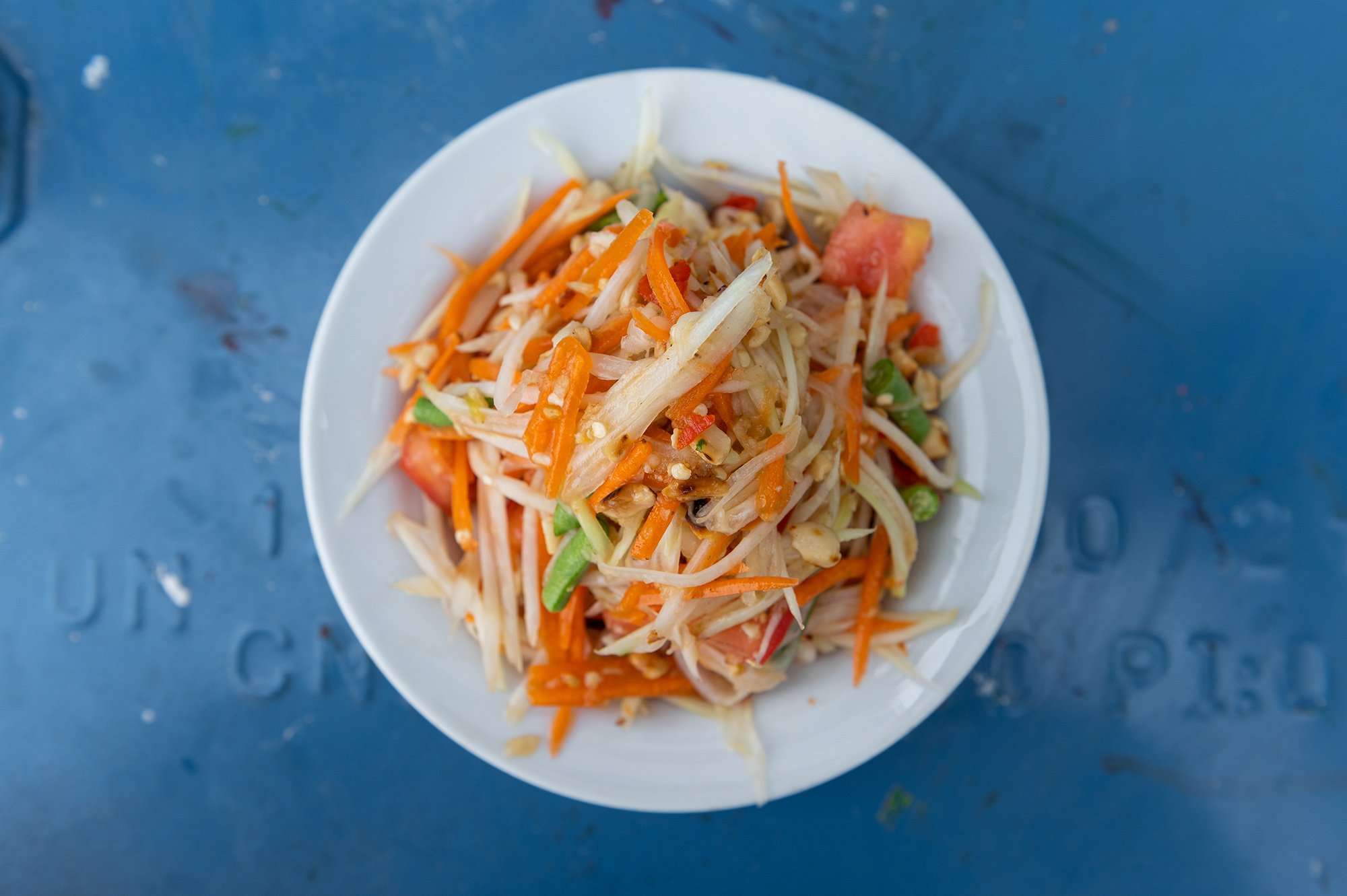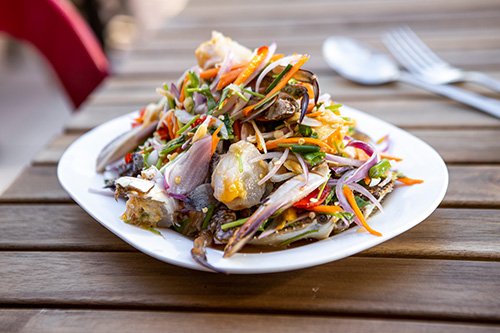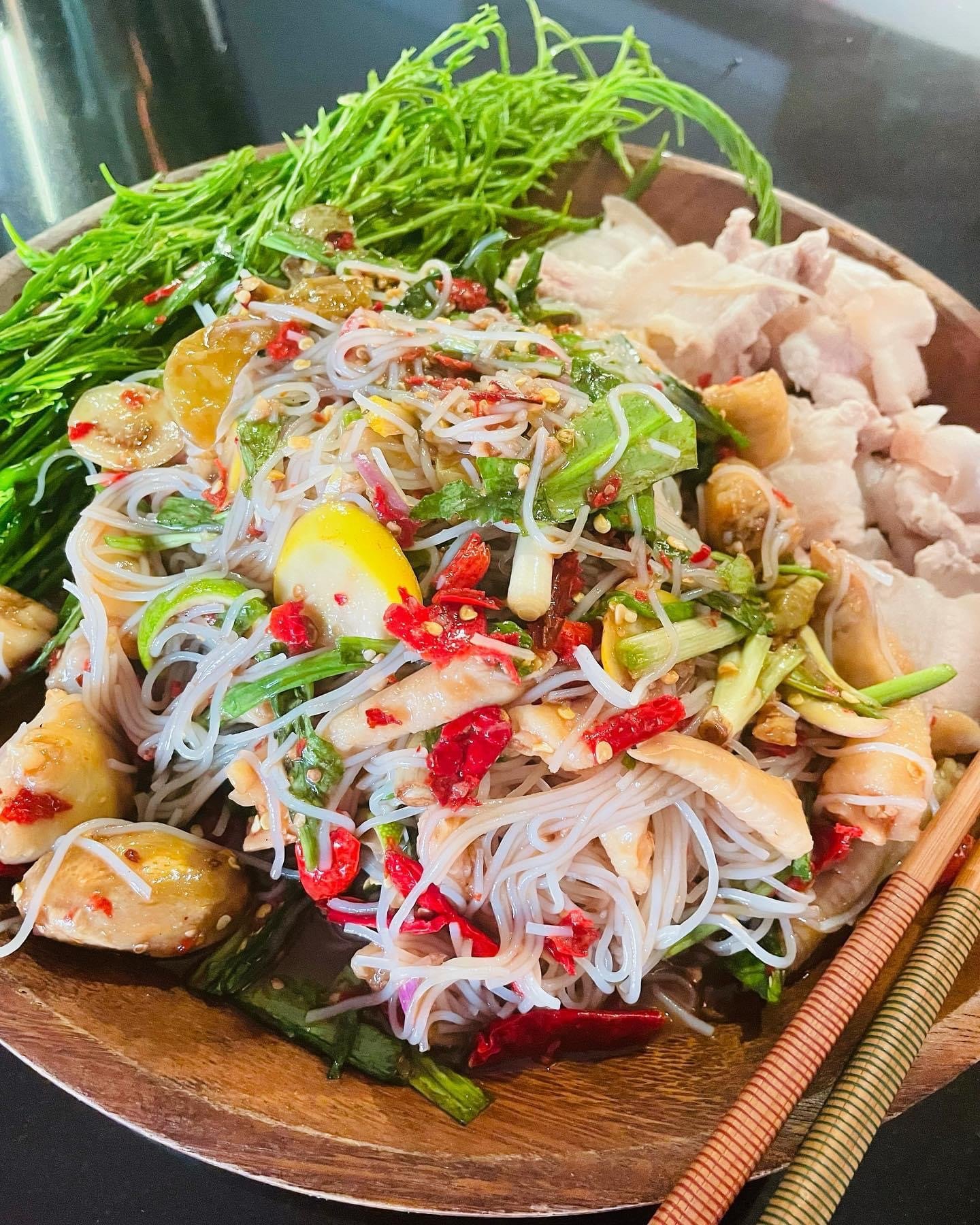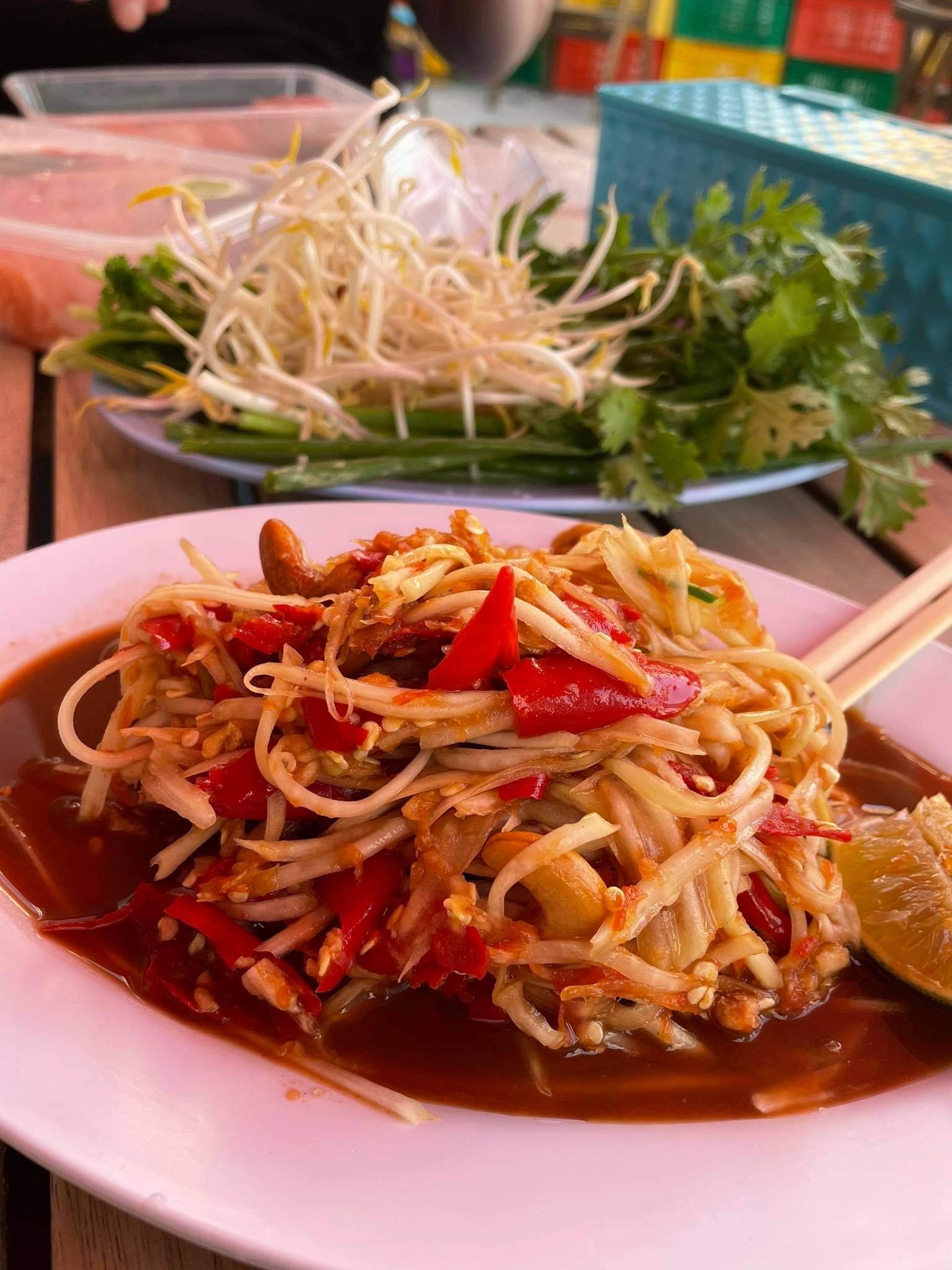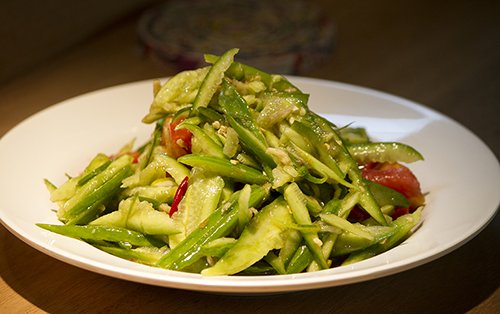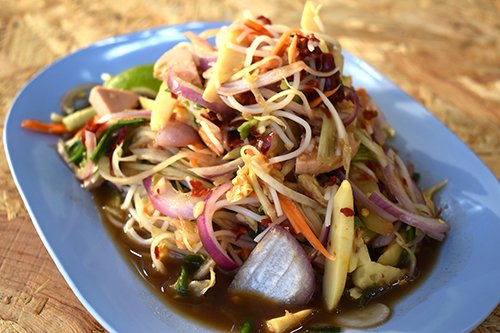With love from Isan (Isaan อีสาน): Redefining Som Tum - More Than Papaya Salad
Som Tum (Papaya Salad) is considered a Thai 'national' dish, but did you know its popularity in Thailand started in Isan อีสาน, the northeastern region of the country? Did you know that Green Papaya isn’t native to Thailand? Did you know “Som Tum” doesn’t translate to “Papaya” or “Papaya salad” in Thai? The word “Papaya” is completely absent. “Som” means “sour” and “tum” means “pound.”
The origin of Som Tum is just as interesting. Neighbouring the Isan region, Laos is touted as the probable place of origin but what we do know is once it did arrive in Thailand, the opening of the Ubon Ratchathani อุบลราชธานี Railway in 1930 that connected Isan to Bangkok is how it made its way out of Isan and into other Thai cities and provinces as people migrated for work.
Not only is green papaya not native to Thailand, it’s not always the star of the show and therefore deserving of all the credit all of the time. It was imported from ‘tropical America’ about 300 years ago, which is another reason why there’s so much more credit due to this dish than papaya: cucumber, carrot, sour mango, mixed or single fruits, noodles, green beans, lotus stems, for example all have important roles in the history of this much-loved dish that back in 2012, Thailand’s Department of Cultural Promotion registered as a national cultural heritage food.
Being from Isan herself, it will come as no surprise that Chef New features it on our menu - a personal favourite of hers, we craft more than 10 kinds of Som Tum such as:
Som Tum Thai (regular fish sauce) ส้มตำไทย
Som Tum Isan (“pla ra” - fermented fish sauce and black mud crabs)
Som Tum Tang (cucumber)
Som Tum Pon Lamai (fruits)
Som Tum Thad ส้มตำถาด
Som Tum Pa ตำป่า
Som Tum Tua (green beans)
People from Thailand’s north east love raw seafood in their salads too, which is why we have several other iterations with raw crab (Som Tum Poo Ma), raw shrimp (Som Tum Goong Sod) or both!
All of our Som Tum salads are made traditionally by either Chef New or Chef Geng using the “krok” and are available Thai or Isan style - ie with regular fish sauce or fermented fish sauce. We’re also very specific about spice levels which is why we always ask you to specify the number of chillis you’d like.
Whether name, origin, iteration, region, spice level or flavour preference (salty, sweet & sour) - Som Tum is quite a complex affair that’s best not overly simplified on any level.
-
If you’re planning to visit Isan when you next travel to Thailand, you’re very welcome to get in touch and we’ll suggest some places you’ll love exploring.
-
Resources & further reading
The Culture Trip - A Brief History of Som Tum
Steve Suggests - The History of Som Tam
Google Doodles - Celebrating Som Tum
Michelin Guide - Decoding Som Tam
-
First published May 19th 2021. Edited 9th April 2022

